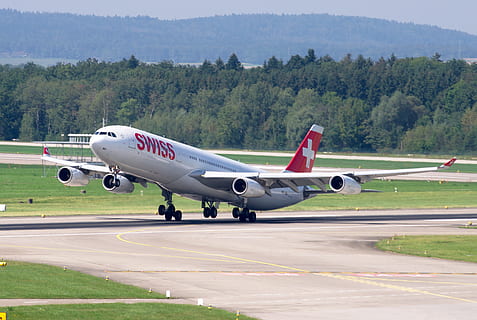moniquec17410
About moniquec17410
The Rise Of Private Jet Flights: A Complete Examine

Introduction
Lately, the private jet industry has skilled vital progress, pushed by a variety of things including increased demand for personalised journey experiences, time effectivity, and enhanced security measures. This report delves into the dynamics of private jet flights, inspecting the market trends, customer demographics, operational features, and the environmental implications of this mode of air travel.

Market Overview
The global private jet market has seen a outstanding expansion, with estimates suggesting that it may attain a valuation of over $40 billion by 2025. This development is fueled by a mix of things together with the rise of the affluent middle class, an increase in business travel, and the growing development of on-demand travel services. Based on the National Business Aviation Affiliation (NBAA), the number of private jet flights in the United States alone has increased by over 25% in the past decade.
Buyer Demographics
Private jet flights are predominantly utilized by excessive-internet-price individuals, company executives, and celebrities. The typical demographic contains people aged between 35 and 65, with a big proportion being enterprise leaders and entrepreneurs. The convenience of private travel appeals to those who prioritize time administration and consolation. Moreover, the rise of fractional possession and jet card applications has opened the market to a broader viewers, allowing extra people to experience private aviation without the burden of full possession.
Varieties of Private Jet Services
- Charter Flights: That is the most common type of private jet travel, where prospects can e-book flights on-demand. Charter providers present flexibility and a variety of aircraft choices, catering to varied budgets and travel wants.
- Fractional Ownership: This model allows multiple homeowners to share a jet, thereby reducing the prices related to possession. Fractional possession companies like NetJets and Flexjet have popularized this strategy, making private travel more accessible.
- Jet Cards: Just like fractional possession, jet cards supply customers a pre-paid package deal of flight hours on specific aircraft. This model offers a straightforward pricing structure and guarantees availability.
- Air Taxi Services: Rising technology and the rise of city air mobility have led to the development of air taxi providers, which utilize smaller aircraft for short-haul flights. If you have any inquiries with regards to in which and how to use private jet charter cost, you can call us at the website. Firms like Blade and Joby Aviation are on the forefront of this innovation.
Operational Elements
The operation of private jets is significantly different from business airlines. Private jet operators should adhere to stringent safety laws, including common upkeep checks and certification processes. The operational prices, including fuel, crew salaries, and maintenance, may be substantial, typically resulting in a excessive barrier to entry for new operators.
Additionally, private jet flights offer unique benefits, similar to the power to access smaller airports and keep away from the congestion commonly associated with industrial air travel. This flexibility allows passengers to reach their locations more quickly and efficiently.
Security and Security
Security is paramount within the private aviation trade. Operators are required to adjust to regulations set forth by aviation authorities, such because the Federal Aviation Administration (FAA) within the United States. Private jets are topic to rigorous safety inspections, and pilots must bear extensive coaching and certification processes.
Moreover, the COVID-19 pandemic has heightened awareness of health and safety protocols within the industry. Enhanced cleaning measures, social distancing practices, and health screenings have become normal procedures to ensure the safety of passengers and crew.
Environmental Affect
While private jet flights provide numerous benefits, additionally they raise considerations regarding their environmental affect. Private jets typically produce a higher carbon footprint per passenger compared to business flights. In keeping with a report by the International Council on Clean Transportation (ICCT), private jets emit approximately 14 instances more CO2 per passenger than industrial airlines.
In response to these concerns, the industry is exploring sustainable aviation gas (SAF) choices and more environment friendly aircraft designs. Some operators are investing in electric and hybrid aircraft applied sciences to scale back emissions. The adoption of carbon offset applications is also turning into extra frequent, permitting travelers to mitigate their environmental affect.
Future Traits
The way forward for private jet flights is prone to be shaped by a number of key tendencies:
- Technological Advancements: Improvements in aircraft design, together with electric and hybrid models, are anticipated to rework the industry. Furthermore, developments in booking technology and customer service platforms will enhance the general travel expertise.
- Sustainability Initiatives: As environmental concerns continue to develop, the private aviation sector will more and more concentrate on sustainability. Using SAF, carbon offsetting, and more environment friendly flight operations will turn into integral to the business’s future.
- Increased Accessibility: The rise of on-demand services and fractional ownership models will make private jet travel extra accessible to a broader viewers. This pattern will probably result in a diversification of clientele, together with youthful travelers and people looking for distinctive travel experiences.
- Urban Air Mobility: The event of air taxi providers and urban air mobility solutions will reshape the panorama of private aviation, particularly in congested urban areas. This innovation guarantees to revolutionize quick-distance travel and supply new alternatives for private jet operators.
Conclusion
The private jet industry is at a pivotal level, characterized by speedy progress, evolving customer expectations, and increasing scrutiny regarding its environmental affect. Because the market continues to broaden, operators should navigate the challenges and alternatives offered by technological advancements and sustainability initiatives. The future of private jet flights will rely on the trade’s capacity to adapt to changing consumer preferences whereas addressing the pressing need for environmental accountability. With the proper methods in place, private aviation can proceed to thrive as a preferred mode of travel for those seeking convenience, comfort, and effectivity.
No listing found.